Name Jack Chevigny | High school Hammond (IN) | |
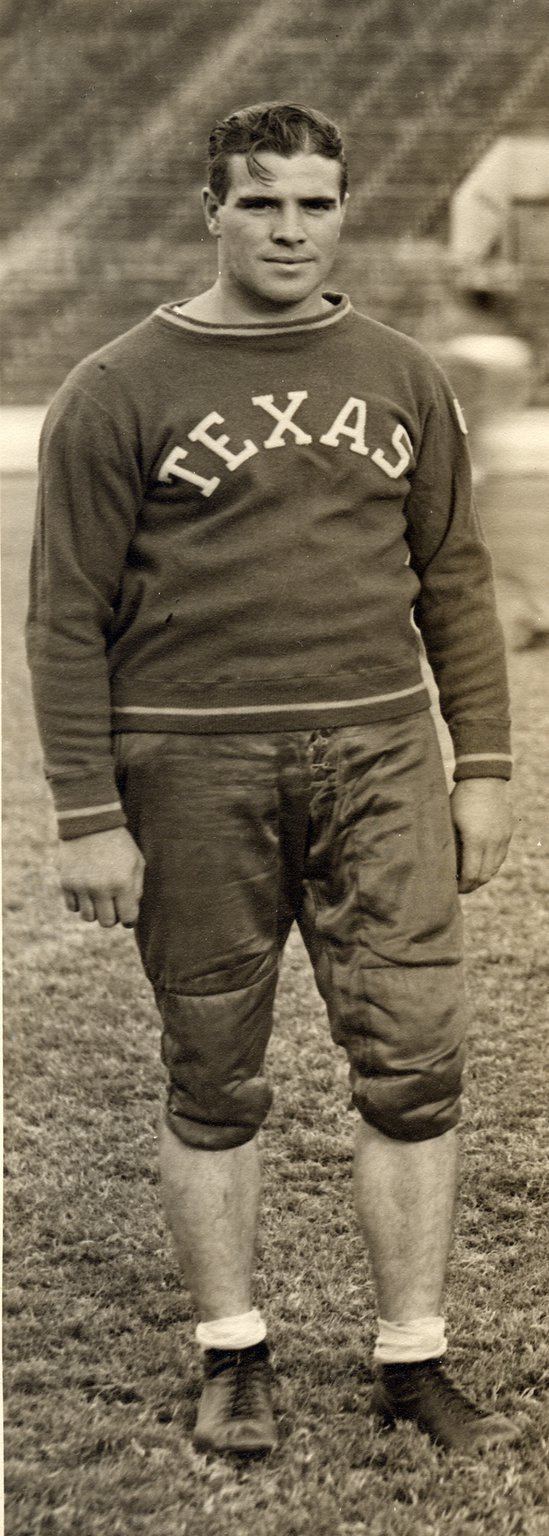 | ||
Date of birth (1906-08-14)August 14, 1906 Date of death February 19, 1945(1945-02-19) (aged 38) Died February 19, 1945, Iwo Jima, Japan Past teams coached Arizona Cardinals (1932–1932) Similar People Bruce Arians, Francis B Wai, Barney F Hajiro, Stanley Armour Dunham, Joseph Sarnoski | ||
Education University of Notre Dame | ||
JACK CHEVIGNEY: THAT'S ONE FOR THE GIPPER
John Edward "Jack" Chevigny (August 14, 1906 – February 19, 1945) was an American football player, coach, lawyer, and United States Marine Corps officer who was killed in action on the first day of the Battle of Iwo Jima in World War II.
Contents
- JACK CHEVIGNEY THATS ONE FOR THE GIPPER
- Early life
- University of Notre Dame
- Football coach and attorney
- US Army
- US Marine Corps
- Iwo Jima and death
- Japanese surrender
- Military awards
- References
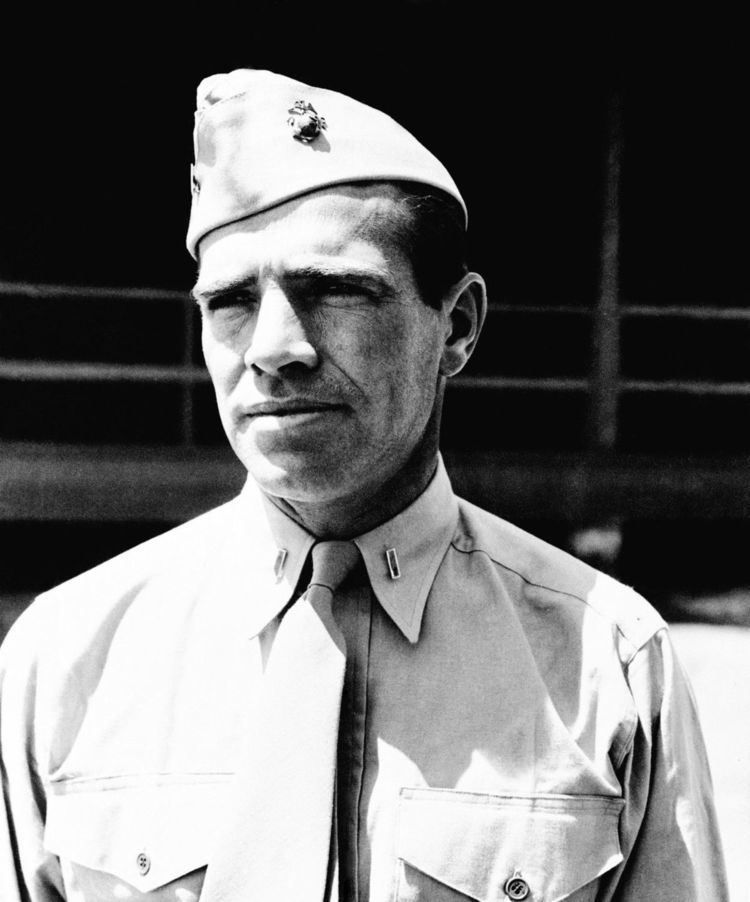
One of the Great Depression era football stars, he was one of the best blocking backs for Knute Rockne's Notre Dame football team in the 1920s. Chevigny later served as the head coach of the NFL's Chicago Cardinals in 1932 and the head football coach at the University of Texas from 1934 to 1936.

On August 18, 1979, he was inducted posthumously into the Indiana Football Hall of Fame. He is also a member of the St. Edwards University Athletics Hall of Fame.
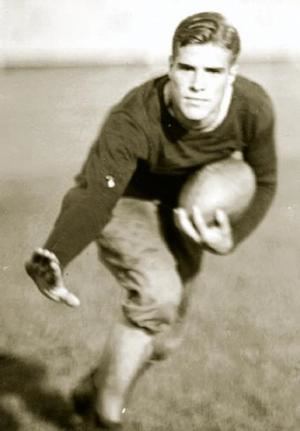
Early life
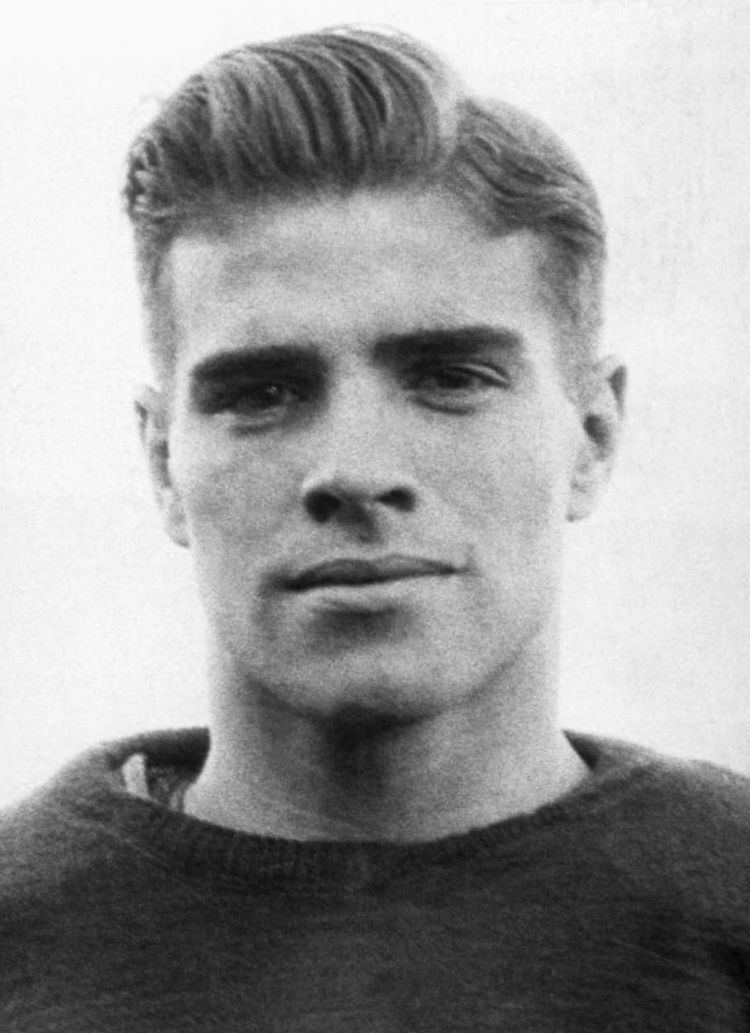
Chevigny was born in Dyer, Indiana, the son of Julius Chevigny, a physician originally from the province of Quebec, Canada who had served in the United States Army, stationed in New York, during World War I, and Rose Ann Chevigny.

He attended Catholic grade school in Dyer before moving to Hammond, Indiana where he attended Hammond High School and played football at, and graduated president of his class in 1924. He had two brothers and two sisters.
University of Notre Dame
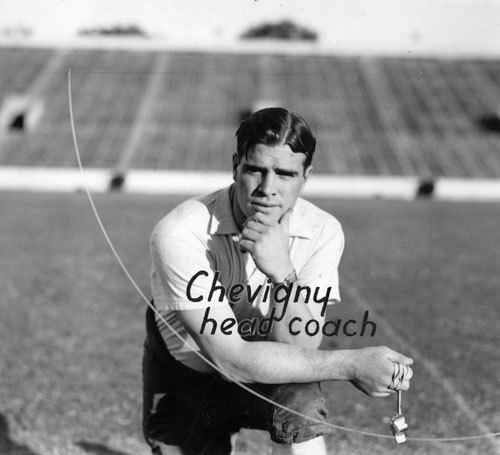
Part of the legend of Notre Dame football history was that Chevigny, who played three seasons as Right Halfback from 1926 to 1928, scored the winning touchdown against Army on November 10, 1928 (the 153rd birthday of the United States Marine Corps) in Yankee Stadium after Knute Rockne’s famous "Win one for the Gipper" halftime speech (in memory of Notre Dame football great, George Gipp) with Chevigny yelling, "That's one for the Gipper" as he crossed the goal line with the winning score.
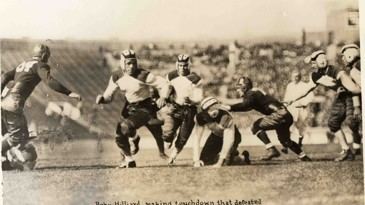
Knute Rockne had related the details about the famous game in an autobiography published in Collier's magazine in 1930. Actually, Chevigny scored the tying touchdown during the 3rd quarter against undefeated Army (then 6-0), to even the score 6–6, and Johnny O'Brien, also inspired by Rockne's speech, ran for the 12–6 game-winning touchdown. However, it was because of that game and Chevigny's touchdown during that game, that the legend of "the Gipper" was born.
Football coach and attorney
Chevigny became an assistant football coach under Rockne in 1929, and Notre Dame went undefeated that season and the next season winning two National Championships. Chevigny who received his Notre Dame law degree in 1931, left Notre Dame football after Rockne's death in an airplane crash March 31, 1931 and the 1931 football season.
He coached the Chicago Cardinals of the NFL to a 2–6–2 record in 1932, and left that position to become head coach at St. Edwards University, a sister school of Notre Dame, in Austin, Texas.
When the University of Texas began looking for a new coach in 1934, Chevigny was chosen for that position. He directed a 7–6 victory over his alma mater, Notre Dame, during the second game played in South Bend, Indiana. The Texas Longhorns finished the season at 7–2–1. The 1935 team didn't play as well and Chevigny finished his coaching career at the University of Texas with a 13–14–2 record in three seasons and was the only state of Texas head coach to have an overall losing record.
In 1937, Chevigny resigned his Texas Longhorns coaching position and was appointed Deputy Attorney General of Texas. Following that, he worked in the oil industry in Texas.
U.S. Army
In March 1943, Chevigny (then 36 years old) was drafted into the U.S. Army after trying to enlist and being rejected because of a football knee injury he received while playing Notre Dame football. He completed basic training at Ft. Benjamin Harrison in Lawrence, Indiana. He was assigned afterwards to Fort Lawton in Seattle, Washington, a training and staging base. A corporal, he had requested and was granted service in the Marine Corps. He received an Honorable Discharge from the U.S Army on June 10, 1943 in order to be released for service in the U.S. Marine Corps Reserve.
U.S. Marine Corps
He was directly commissioned a Marine Corps First Lieutenant going on active duty in the Marine Corps Reserve on June 11, 1943 in Seattle. The Marine Corps District Headquarters Induction and Recruitment Station in Seattle immediately used him in a public-relations enlistment poster photo wearing his summer officers service uniform. Afterwards, he was transferred to Officer Indoctrination and Physical Training schools at Camp Pendleton, California.
In September 1943, Chevigny was assigned to Camp Lejeune in New River, North Carolina as a physical training instructor, athletic officer, and assistant coach of the Camp Lejeune football team. He soon became head coach, renaming the team (then 0-2-1) which was named the " Camp Lejeune All-Stars", to the "Camp Lejeune Leathernecks" (they finished 6-2-1). In late 1943, he requested an overseas combat assignment.
Iwo Jima and death
In January 1944, Chevigny reported for duty at Camp Pendleton, California. After brief duty as an instructor, he was assigned to Headquarters Company, Headquarters Battalion, Fifth Marine Division. He was sent with the 5th Division to Camp Tarawa, Hawaii to train for the assault of Iwo Jima (Operation Detachment) which would include two other Marine divisions of the V Amphibious Corps. He was reassigned for duty as a liaison officer of H&S Company, 27th Marine Regiment, 5th Marine Division. He went with his unit to Iwo Jima aboard the attack transport, USS Rutland. The 27th Marines landed on "Red Beach 1" and "Red Beach 2" on February 19, 1945 (D-day). 1st Lt. Chevigny was one of the many hundreds of Marines and Navy corpsmen serving alongside them that were killed in action on the seven color named and numbered landing zones, each 550-yards wide, that together stretched for two miles of beach on the southeast side of Iwo Jima.
1st Lt. Chevigny was buried in the 5th Marine Division Cemetery on Iwo Jima and later was reburied in the National Memorial Cemetery of the Pacific (called the "Punchbowl"; dedicated in 1949) in Honolulu, Hawaii. His tombstone is located in Section C, Site 508.
Japanese surrender
Another legend surrounding Chevigny is that, after the 1934 football victory, he had been presented a fountain pen with the inscription, "To Jack Chevigny, a Notre Dame boy who beat Notre Dame", and that on September 2, 1945, this pen was discovered in the hands of one of the Japanese officer envoys at the surrender of Japan on the battleship USS Missouri, and that the inscription was changed to read, "To Jack Chevigny, a Notre Dame boy who gave his life for his country in the spirit of old Notre Dame". The legend, which surfaced in 1945 in conjunction with the anniversary of the November 10, 1928 football game, has been a part of Notre Dame lore ever since.
Military awards
Chevigny's military decorations and awards:
